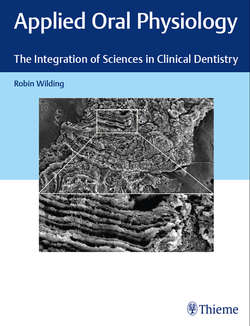Читать книгу Applied Oral Physiology - Robin Wilding - Страница 25
На сайте Литреса книга снята с продажи.
2.3.1 Bacterial Penetration
ОглавлениеA large number of bacterial species have been isolated from dental caries but a few genera are commonly found and predominate (see Chapter 4.3 The Biofilms of the Oral Environment). The most frequently isolated from occlusal and smooth surface caries are the members of the Streptococcus species and in particular Streptococcus mutans, and Streptococcus sobrinus, collectively called the mutans streptococci. Actinomyces species are the dominant genus in root surface caries. Deep dentin caries has a predominance of lactobacillus organisms with several other gram-positive rods and filaments. Kidd and her coworkers took samples of carious dentin during cavity preparation and cultured the samples so as to count the number of bacteria.1 As the samples were taken, the dentin was assessed as either soft, medium, or hard, wet or dry, and pale or dark. The number of bacteria recovered diminished significantly as the caries became dryer and harder and the cavity became deeper. This reduction in numbers of bacteria was not marginal but of the order of 100 times less. There was no significant difference between the number of organisms cultured from medium as opposed to hard dentin. The color of the sample was not associated with the number of bacteria recovered. These findingssuggest that at the stage in cavity preparation, when the wet, heavily infected, soft dentin has been removed, further removal of medium, hard-stained dentin may not contribute to further reduction of infected material and may in fact be unnecessarily destructive. The question arises of the fate of slightly soft dentin when not removed, and whether it is a source of secondary caries.
Fig. 2.16 Histological sections of infected and affected dentin from a carious tooth. (a) A section of dentin (magnification × 1,000) toward the surface of a caries lesion with bacteria-like structures packed into the dental tubules. This dentin could be described as infected. (b) A section of dentin from the same tooth, closer to the pulp and partly visible in ▶ Fig. 2.12b. A few dentinal tubules are stained with bacterial debris. This zone of dentin could be described as affected.
Fig. 2.17 A diagrammatic representation of layers within a carious cavity. Dentin caries comprises two main layers. In the outer layer, the dentin is heavily infected with bacteria. Both organic matrix and mineral have been lost and the dentin is beyond repair. In the deeper layer, the dentin has been affected by plaque acids and demineralized. The number of colony-forming units (CFUs) of bacteria decreases (about 100 times) as cavity preparation proceeds into affected dentin. The damage in this layer is reversible if bacterial metabolism can be halted. A barrier of translucent (well-mineralized) dentin may be formed ahead of the advancing lesion. Reactionary (secondary) dentin forms to protect the pulp from acid irritation. (Adapted from Kidd and Joyston-Bechal 1987.)
